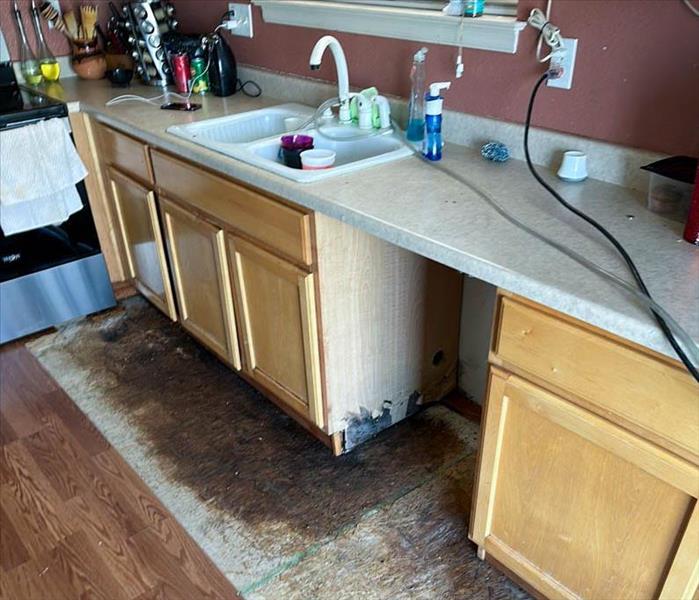How to Prevent Bacterial Growth After Water Leaks in Colorado
10/8/2023 (Permalink)
 When water invades your home or business, it's essential to act quickly to prevent the growth of harmful bacteria.
When water invades your home or business, it's essential to act quickly to prevent the growth of harmful bacteria.
Living in the Centennial State, we know that water damage is a common issue, often due to heavy snowfall, rain, or flooding. When water invades your home or business, it's essential to act quickly to prevent the growth of harmful bacteria. In this blog, we'll guide you through the steps to ensure a safe and bacteria-free environment in your property.
Understanding the Threat
Water intrusion, whether from a burst pipe, roof leak, or natural disaster, creates a perfect breeding ground for bacteria and other pathogens. Colorado's climate, with its varying temperatures and humidity levels, can exacerbate the problem. Bacteria thrive in moist and warm environments, making it crucial to address water damage promptly and effectively.
Start with a Thorough Cleanup
After a water intrusion event, the first step is to remove all standing water and moisture from your property. Use pumps, vacuums, and dehumidifiers to ensure every nook and cranny is dry. Be diligent, as even small pockets of moisture can lead to bacterial growth.
Inspect for Hidden Moisture
Colorado's unique geography can make water intrusion tricky to detect, as water can seep into walls, floors, and ceilings. Utilize moisture detection equipment to identify hidden moisture pockets. Pay special attention to areas prone to water damage, like basements and attics.
Remove Damaged Materials
Any materials that cannot be adequately dried or cleaned should be removed and replaced. This includes drywall, insulation, and flooring. This not only prevents bacterial growth but also reduces the risk of mold development.
Thorough Cleaning and Disinfection
Once your property is dry and damaged materials are removed, it's essential to clean and disinfect all affected areas. Use EPA-approved disinfectants to eliminate bacteria and viruses. This step is crucial for ensuring a safe and healthy environment for you and your family.
Proper Ventilation
Colorado's dry climate can be an advantage when dealing with water intrusion. Use natural ventilation, like opening windows and doors, to help speed up the drying process. Additionally, consider using fans and air purifiers to circulate air and remove airborne contaminants.
Regular Monitoring
Even after the initial cleanup, it's essential to continue monitoring the moisture levels in your property. Regularly check for signs of new leaks or moisture buildup to prevent future bacterial growth.
Preventing bacterial growth after water intrusion in Colorado is essential for the safety of your loved ones and the longevity of your property. By following these steps and acting swiftly, you can minimize the risks associated with water damage and ensure a clean and safe environment. However, if you ever find yourself facing a significant water intrusion event, don't hesitate to reach out to SERVPRO of North Thornton/Brighton for professional assistance. Our experienced team is here to help you restore your property to its pre-damage condition and keep Colorado homes and businesses safe.






 24/7 Emergency Service
24/7 Emergency Service